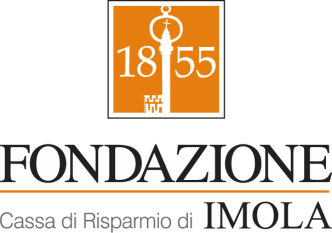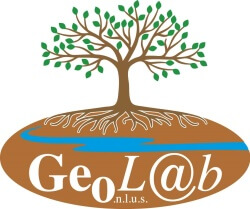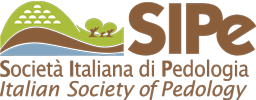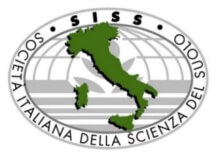Evaluation of the concentration of minerals and heavy metals in some medicinal plants and the safety of their consumption
DOI:
https://doi.org/10.60923/issn.2281-4485/22420Keywords:
medicinal plants, minerals, heavy metals, ICP-OES, safetyAbstract
Besides their therapeutic value, medicinal plants can also contain varying levels of minerals and heavy metals, affecting the quality and safety for use. This could affect how safe and of what quality they are when taken by humans. In this case, we analyzed a series of elements (Na, K, Ca, Mg, Fe, Mn, Zn, Ni, Cr, and Pb) found in plants like Trifolium pratense L., Urtica dioica L., Sideritis scardica Griseb., Origanum vulgare L., Allium ursinum L., and Althaea officinalis L. The analytical method used in order to quantify these concentrations was Inductively Coupled Plasma Optical Emission Spectroscopy (ICP-OES), which is very precise for such an analysis. We noticed that the levels of these elements were not equal across the plants — they were significantly different from each other. Most of the mineral levels were within what is considered acceptable under the Recommended Dietary Allowance (RDA) and Estimated Daily Intake (EDI). In the case of heavy metals (i.e., Cr, Ni, and Pb), Target Hazard Quotient (THQ) and Hazard Index (HI) values came out lower than 1, which means that presumably there is no considerable health hazard in the event of consuming these plants in normal contents. These results indicate the necessity for the systematic evaluation of concentrations of such elements in plant-based drugs and general environmental assessment of their natural habitats to ensure consumer safety.
References
AKBARIBAZM M., KHAZAEI F., NASERI L., PA-ZHOUHI M., ZAMANIAN M., KHAZAEI M (2021) Pharmacological and therapeutic properties of the Red Clover (Trifolium pratense L.): an overview of the new findings. Journal of Traditional Chinese Medicine, 41(4). https://doi.org/10.19852/j.cnki.jtcm.20210604.001
AKBARIBAZM M., KHAZAEI M.R., KHAZAEI M. (2020) Phytochemicals and antioxidant activity of alcohol-lic/hydroalcoholic extract of Trifolium pratense. Chinese Herbal Medicines, 12(3):326–335. https://doi.org/10.1016/j.chmed.2020.02.002
ALI H., KHAN E (2018) What are heavy metals? Long-standing controversy over the scientific use of the term ‘heavy metals’ – Proposal of a comprehensive definition. Toxicological & Environmental Chemistry, 100(1): 6–19. https://doi.org/10.1080/02772248.2017.1413652
ANTAL D., CITU C., ARDELEAN F., DEHELEAN C., VLAIA L., SOICA C O. (2015) Metallome of Origanum vulgare: The unknown side of a medicinal and aromatic plant used worldwide. Farmacia, 63(4):534–538.
ASGARPANAH J., MOHAJERANI R. (2012) Phytoche-mistry and pharmacologic properties of Urtica dioica L. Journal of Medicinal Plants Research, 6(46):5714–5719.
ASIMINICESEI D.M., VASILACHI I.C., GAVRILESCU M.A. (2020) Heavy metal contamination of medicinal plants and potential implications on human health. Revista de Chimie, 71(7): 16–36. https://doi.org/10.37358/RC.20.7.8222
BEHMEN F., MANDAL Š., DUNDOVIĆ V., DELIĆ M., MURTIĆ S. (2020) Determination of trace and heavy metals in selected samples of oregano (Origanum vulgare L.) from Bosnia and Herzegovina. In Central European Congress on Food (pp. 157–162). Cham: Springer International Publ-ishing. http://dx.doi.org/10.1007/978-3-031-04797-8_14
BHAT R., KIRAN K., ARUN A.B., KARIM A.A. (2010) Determination of mineral composition and heavy metal content of some nutraceutically valued plant products. Food Anal Methods, 3: 181–187.https://doi.org/10.1007/s12161-009-9107-y
BISLIMI, K., HALILI, J., SAHITI, H., BICI, M., & MAZREKU, I. (2021). Effect of mining activity in accumulation of heavy metals in soil and plant (Urtica dioica L). Journal of Ecological Engineering, 22(1):1–7. https://doi.org/10.12911/22998993/128691
BONATERRA G.A., BRONISCHEWSKI K., HUNOLD P., SCHWARZBACH H., HEINRICH E.U., FINK C. (2020). Anti-inflammatory and anti-oxidative effects of Phytohustil® and root extract of Althaea officinalis L. on macrophages in vitro. Frontiers in Pharmacology, 11:290. https://doi.org/10.3389/fphar.2020.00290
BORGNA L., DI LELLA L.A., NANNONI F., PISANI A., PIZZETTI E., PROTANO G. (2009) The high contents of lead in soils of northern Kosovo. Journal of Geochemical Exploration, 101(2).137–146. https://doi.org/10.1016/j.gexplo.2008.05.001
BUQAJ L., GASHI B., ZOGAJ M., VATAJ R., SOTA V., TUNA M. (2023).Stress induced by soil contamination with heavy metals and their effects on some biomarkers and DNA damage in maize plants at the vicinity of Ferronikel smelter in Drenas, Kosovo. Journal of Environmental Science and Health, Part B, 58(10): 617–627. https://doi.org/10.1080/03601234.2023.2253114
CAKAJ A., HANĆ A., LISIAK-ZIELIŃSKA M., BORO-WIAK K., DRAPIKOWSKA M. (2023) Trifolium pratense and the heavy metal content in various urban areas. Sustaina-bility, 15(9): 7325. https://doi.org/10.3390/su15097325
CECCANTI C., BRIZZI A., LANDI M., INCROCCI L., PARDOSSI A., GUIDI L. (2021) Evaluation of major minerals and trace elements in wild and domesticated edible herbs traditionally used in the Mediterranean area. Biological Trace Element Research, 199: 3553–3561. https://doi.org/10.1007
CHIZZOLA R. (2012). Metallic mineral elements and heavy metals in medicinal plants. Medicinal and Aromatic Plant Science and Biotechnology, 6(1): 39–53.
DACI-AJVAZ,M., ZENELI L., DACI N., KRASNIQI A., YMER, N. (2018) Chemical effects and antioxidant responses of Urtica dioica L. extracts growing along highway. Fresenius Environmental Bulletin, 27. 172–179. https://www.researchgate.net/publication/321757796
DHOUIBI R., AFFES H., SALEM M.B., HAMMAMI S., SAHNOUN Z., ZEGHAL K.M. (2020) Screening of pharmacological uses of Urtica dioica and others benefits. Progress in Biophysics and Molecular Biology, 150:67–77. https://doi.org/10.1016/j.pbiomolbio.2019.05.008
ERNST W.H. (2006) Evolution of metal tolerance in higher plants. Snow and Landscape Research, 80(3), 251–274.
FAIKU F., HAZIRI A., MAXHUN, A., GRAPCI V. (2022a) Determination of mineral content in cranberries (Vaccinium microcarpum) and their infusions consumed in Kosovo. Agriculture and Forestry, 68(3). https://doi.org/10.17707/AgricultForest.68.3.13
FAIKU F., MAXHUNI A., FAIKU B., NURO A., RASHI-TI P., HAZIRI A. (2022b) Mineral content of two Mentha species (Mentha spicata L. and Mentha arvensis L.) growing in Kosovo. Bulgarian Journal of Agricultural Science, 28(6). https://www.cabidigitallibrary.org/doi/pdf/10.5555/20220566561
GASHI B., BUQAJ L., VATAJ R., TUNA M. (2024) Chlorophyll biosynthesis suppression, oxidative level and cell cycle arrest caused by Ni, Cr and Pb stress in maize exposed to treated soil from the Ferronikel smelter in Drenas, Koso-vo. Plant Stress, 11: 100379. https://doi.org/10.1016/j.stress.2024.100379
GASHI B., OSMANI M., ALIU S., ZOGAJ M., KASTRATI F. (2020) Risk assessment of heavy metal toxicity by sensitive biomarker δ-aminolevulinic acid dehydratase (ALA-D) for onion plants cultivated in polluted areas in Kosovo. Journal of Environmental Science and Health, Part B, 55(5).462–469. https://doi.org/10.1080/03601234.2020.1721229
GJERGJIZI NALLBANI B., YALCIN I.E., KARADENIZ S., HOCAOGLU-OZYIGIT A., DEMIR G., OZYIGIT I. I. (2024) Utilizing a medicinal plant and soil assays for heavy metal pollution assessment and its impacts in a Turkish industrial zone. Spectroscopy Letters, 1–18.
https://doi.org/10.1080/00387010.2024.2410828
GORDANIĆ S.V., KOSTIĆ A.Ž., KRSTIĆ Đ., VUKOVIĆ S., KILIBARDA S., MARKOVIĆ T., MORAVČEVIĆ Đ. (2023) A detailed survey of agroecological status of Allium ursinum across the Republic of Serbia: Mineral composition and bioaccumulation potential. Heliyon, 9(11)
https://doi.org/10.1016/j.heliyon.2023.e22134
HLIHOR R.M., ROȘCA M., HAGIU-ZALESCHI L., SIMION I.M., DARABAN G.M., STOLERU V. (2022. Medicinal plant growth in heavy metals contaminated soils: Responses to metal stress and induced risks to human health. Toxics, 10(9): 499. https://doi.org/10.3390/toxics10090499
JOSHI B.C., MUKHIJA M., KALIA A.N. (2014) Pharmacognostical review of Urtica dioica L. International Journal of Green Pharmacy, 8(4)
https://doi.org/10.4103/0973-8258.142669
JUROWSKI K., KROŚNIAK M. (2022) The toxicological assessment of content and exposure of heavy metals (Pb and Cd) in traditional herbal medicinal products with marshmallow root (Althaea officinalis L., radix) from Polish pharmacies. Toxics, 10(4): 188.
https://doi.org/10.3390/toxics10040188
KARAHAN F. (2023) Evaluation of trace element and heavy metal levels of some ethnobotanically important medicinal plants used as remedies in Southern Turkey in terms of human health risk. Biological Trace Element Research, 201(1): 493–513.
https://doi.org/10.1007/s12011-022-03299-z
KARAHAN F., OZYIGIT I.I., SARACOGLU I.A., YALCIN I.E., OZYIGIT A.H., ILCIM A. (2020) Heavy metal levels and mineral nutrient status in different parts of various medicinal plants collected from eastern Mediterra-nean region of Turkey Biological Trace Element Research, 197:316–329. https://doi.org/10.1007/s12011-019-01974-2
KARAHAN F., OZYIGIT I.I., SARACOGLU I.A., YAL-CIN I.E., OZYIGIT A.H., ILCIM A. (2020) Heavy metal levels and mineral nutrient status in different parts of various medicinal plants collected from eastern Mediterranean region of Turkey. Biological Trace Element Research, 197:316–329. https://doi.org/10.1007/s12011-019-01974-2
KARAPANDZOVA M., QAZIMI B., STEFKOV G., BAČEVA K., STAFILOV T., PANOVSKA T.K., KULE-VANOVA S. (2013) Chemical characterization, mineral conareas in Kosovo. Journal of Environmental Science and Health, Part B, 55(5).462–469. https://doi.org/10.1080/03601234.2020.1721229
GJERGJIZI NALLBANI B., YALCIN I.E., KARADENIZ S., HOCAOGLU-OZYIGIT A., DEMIR G., OZYIGIT I. I. (2024) Utilizing a medicinal plant and soil assays for heavy metal pollution assessment and its impacts in a Turkish industrial zone. Spectroscopy Letters, 1–18. https://doi.org/10.1080/00387010.2024.2410828
GORDANIĆ S.V., KOSTIĆ A.Ž., KRSTIĆ Đ., VUKOVIĆ S., KILIBARDA S., MARKOVIĆ T., MORAVČEVIĆ Đ. (2023) A detailed survey of agroecological status of Allium ursinum across the Republic of Serbia: Mineral composition and bioaccumulation potential. Heliyon, 9(11). https://doi.org/10.1016/j.heliyon.2023.e22134
HLIHOR R.M., ROȘCA M., HAGIU-ZALESCHI L., SIMION I.M., DARABAN G.M., STOLERU V. (2022. Medicinal plant growth in heavy metals contaminated soils: Responses to metal stress and induced risks to human health. Toxics, 10(9): 499. https://doi.org/10.3390/toxics10090499
JOSHI B.C., MUKHIJA M., KALIA A.N. (2014) Pharmacognostical review of Urtica dioica L. International Journal of Green Pharmacy, 8(4). https://doi.org/10.4103/0973-8258.142669
JUROWSKI K., KROŚNIAK M. (2022) The toxicological assessment of content and exposure of heavy metals (Pb and Cd) in traditional herbal medicinal products with marshmallow root (Althaea officinalis L., radix) from Polish pharmacies. Toxics, 10(4): 188. https://doi.org/10.3390/toxics10040188
KARAHAN F. (2023) Evaluation of trace element and heavy metal levels of some ethnobotanically important medicinal plants used as remedies in Southern Turkey in terms of human health risk. Biological Trace Element Research, 201(1): 493–513. https://doi.org/10.1007/s12011-022-03299-z
KARAHAN F., OZYIGIT I.I., SARACOGLU I.A., YALCIN I.E., OZYIGIT A.H., ILCIM A. (2020) Heavy metal levels and mineral nutrient status in different parts of various medicinal plants collected from eastern Mediterra-nean region of Turkey Biological Trace Element Research, 197:316–329. https://doi.org/10.1007/s12011-019-01974-2
KARAHAN F., OZYIGIT I.I., SARACOGLU I.A., YAL-CIN I.E., OZYIGIT A.H., ILCIM A. (2020) Heavy metal levels and mineral nutrient status in different parts of various medicinal plants collected from eastern Mediterranean region of Turkey. Biological Trace Element Research, 197:316–329. https://doi.org/10.1007/s12011-019-01974-2
KARAPANDZOVA M., QAZIMI B., STEFKOV G., BAČEVA K., STAFILOV T., PANOVSKA T.K., KULE-VANOVA S. (2013) Chemical characterization, mineral content and radical scavenging activity of Sideritis scardica and S. raeseri from R. Macedonia and R. Albania. Natural Product Communications, 8(5). https://doi.org/10.1177/1934578X1300800525
KAUR R., BHARDWAJ R., THUKRAL A.K. (2009) Interactive effect of Cr (VI) with other heavy metals on the growth and metal uptake potential of Brassica juncea L. seedlings. Terrestrial and Aquatic Environmental Toxicology, 3(1):16–27.
KHAN A., KHAN S.K M.A., KHAN M.A., AAMIR M., ULLAH H., NAWAB,J., (2019). Heavy metals effects on plant growth and dietary intake of trace metals in vegetables cultivated in contaminated soil. International Journal of Environmental Science and Technology, 16:2295–2304. https://doi.org/10.1007/s13762-018-1849-x
KHAN I., AWAN S.A., RIZWAN M., ALI S., HASSAN M. J., BRESTIC M. (2021). Effects of silicon on heavy metal uptake at the soil-plant interphase: A review. Ecotoxicology and Environmental Safety, 222: 112510. https://doi.org/10.1016/j.ecoenv.2021.112510
KHAN S., CAO Q., ZHENG Y.M., HUANG Y.Z., ZHU Y.G. (2008. Health risks of heavy metals in contaminated soils and food crops irrigated with wastewater in Beijing, China. Environmental Pollution, 152(3) 686–692. https://doi.org/10.1016/j.envpol.2007.06.056
KOHZADI S., SHAHMORAD, B., GHADERI E., LOQ-MANI H., MALEKI A. (2019) Concentration, source, and potential human health risk of heavy metals in the commonly consumed medicinal plants. Biological Trace Element Rese-arch, 187:41–50. https://doi.org/10.1007/s12011-018-1357-3
KOLODZIEJCZYK-CZEPAS J. (2012) Trifolium species-derived substances and extracts—Biological activity and prospects for medicinal applications. Journal of Ethnopharmacology, 143(1), 14–23. https://doi.org/10.1016/j.jep.2012.06.048
LAJAYER B.A., GHORBANPOUR M., NIKABADI S. (2017) Heavy metals in contaminated environment: destiny of secondary metabolite biosynthesis, oxidative status and phytoextraction in medicinal plants. Ecotoxicology and Environmental Safety, 145, 377–390. https://doi.org/10.1016/j.ecoenv.2017.07.035
MARINESCU E., ELISEI A.M., APROTOSOAIE A.C., CIOANCĂ O., TRIFAN A., MIRON A., HĂNCIANU M. (2020) Assessment of heavy metals content in some medici-nal plants and spices commonly used in Romania. Farmacia, 68(6):1099–1105. https://doi.org/10.31925/farmacia.2020.6.18
MEMUSHAJ L., SHTEMBARI A., KERI, J. (2024). Com-parison of heavy metals, secondary metabolites, and total po-lyphenols in Hypericum perforatum L. and Althaea officinalis L. Journal of Medical Pharmacy and Chemical Research, 6(10): 1558–1566. https://doi.org/10.48309/jmpcr.2024.449445.1148
MITRA S., CHAKRABORTY A.J., TAREQ A.M., EMRAN T.B., NAINU F., KHUSRO A.. (2022). Impact of heavy metals on the environment and human health: Novel therapeutic insights to counter the toxicity. Journal of King Saud University - Science, 34(3): 101865. https://doi.org/10.1016/j.jksus.2022.101865
MOHAMMADI M., ASADI-GHARNEH H.A. (2018) How geographical differences may affect the uptake of nutrients by the wild populations of pennyroyal (Mentha longifolia (L.), Huds). Catena, 165:173–177. https://doi.org/10.1016/j.catena.2018.01.019
NAGAJYOTI P.C., LEE K.D., SREEKANTH T.V.M. (2010) Heavy metals, occurrence and toxicity for plants: a review. Environmental Chemistry Letters, 8. 199–216. https://doi.org/10.1007/s10311-010-0297-8
NANNONI F., PROTANO G., RICCOBONO F. (2011) Fractionation and geochemical mobility of heavy elements in soils of a mining area in northern Kosovo. Geoderma, 161(1 -2), 63–73. https://doi.org/10.1016/j.geoderma.2010.12.008
NAQUVI K. J., AHAMAD J., SALMA A., ANSARI S.H., NAJMI A.K. (2019) A critical review on traditional uses, phytochemistry and pharmacological uses of Origanum vulgare Linn. International Research Journal of Pharmacy, 10(3):7–11. https://doi.org/10.7897/2230-8407.100370
NAZ M., AHMED M., AFTAB F., ALI M.A., SANAULLAH M., AHMAD W. 2024). Contamination of trace, non-essential/heavy metals in nutraceuticals/dietary supplements: A chemometric modelling approach and evaluation of human health risk upon dietary exposure. Food and Chemical Toxicology, 114806. https://doi.org/10.1016/j.fct.2024.114806
OPREA B.Ș., VRÎNCEANU N.O., CARABULEA V., MOTELICĂ D.M., COSTEA M., PLOPEANU G.I. (2024). Soil heavy metals content variation depending on the distance from pollution source and uptake by the Trifolium pratense L. species harvested from Copșa Mică area, Central Romania. Scientific Papers Series E Land Reclamation, Earth Observation & Surveying, Environmental Engineering, 13.
ORAVETZ K., DIACONEASA,Z., CARPA R., RAKOSY-TICAN E., CRUCERIU D. (2024. The antioxidant, antimicrobial, and antitumor properties of flavonol-rich ex-tracts from Allium ursinum (wild garlic) leaves: A comparison of conventional maceration and ultrasound-assisted extrac-tion techniques. nternational Journal of Molecular Sciences, 25(23):12799. https://doi.org/10.3390/ijms252312799
OZYIGIT I.I., NALLBANI B.G., YALCIN I.E., DEMIR G., PLAKIQI-MILAIMI A. (2023) Enhancing environmen-tal monitoring: Utilizing plant and soil assays to track pol-lution in a Turkish organized industrial zone. Spectroscopy Letters, 56(8):452–471. https://doi.org/10.1080/00387010.2023.2257791
OZYIGIT I. I., YALCIN B., TURAN S., SARACOGLU I. A., KARADENIZ S., YALCIN I.E., DEMIR G. (2018). Investigation of heavy metal level and mineral nutrient status in widely used medicinal plants’ leaves in Turkey: Insights into health implications. Biological Trace Element Research, 182: 387–406. https://doi.org/10.1007/s12011-017-1070-7
PEZZANI R., VITALINI S., IRIT, M. (2017) Bioactivities of Origanum vulgare L.: An update. Phytochemistry reviews, 16:1253–1268. https://www.researchgate.net/publication/310616393
QAZIMI B., STAFILOV T., BAČEVA-ANDONOVSKA K., TAŠEV K., DRAGUSHA S., KORAQI H. (2022) Comparison of mineral content between spontaneous and cultivated flowering stems of Sideritis scardica. Macedonian Pharmaceutical Bulletin, 68(Suppl 2):77–78. https://doi.org/10.33320/maced.pharm.bull.2022.68.04.033
RADHA KUMAR M., PURI S., PUNDIR A., BANGAR S. P., CHANGAN S.. (2021). Evaluation of nutritional, phyto-chemical, and mineral composition of selected medicinal plants for therapeutic uses from cold desert of Western Himalaya. Plants, 10(7):1429. https://doi.org/10.3390/plants10071429
RASHID A., SCHUTTE B.J., ULERY A., DEYHOLOS M. K., SANOGO S., LEHNHOFF E.A., BECK L. (2023) Heavy metal contamination in agricultural soi: Environmen-tal pollutants affecting crop health. Agronomy, 13(6): 1521. https://doi.org/10.3390/agronomy13061521
RASOOL HASSAN B.A. (2012) Medicinal plants (importan-ce and uses). Pharmaceutica Analytica Acta, 3(10):2153-435. https://doi.org/10.4172/2153-2435.1000e139
SAHITI H., BISLIMI K., ABDURRAHMANI GAGICA N., BAJRA BRAHIMAJ T., DALO E. (2023). Bioaccumu-lation and distribution of Pb, Ni, Zn and Fe in stinging nettle (Urtica dioica) tissues and heavy metal-contamination asses-sment in the industrial zone of smelter Ferronikeli (Drenas-Kosovo). Journal of Environmental Science and Health, Part A, 58(9):805–810. https://doi.org/10.1080/10934529.2023.2236535
ŠAJN R., ALIU M., STAFILOV T., ALIJAGIĆ J. (2013) Heavy metal contamination of topsoil around a lead and zinc smelter in Kosovska Mitrovica/Mitrovicë, Kosovo/Kosovë. Journal of Geochemical Exploration, 134: 1–16. https://doi.org/10.1016/j.gexplo.2013.06.018
SARMA H., DEKA S., DEKA H., SAIKIA R.R. (2011) Ac-cumulation of heavy metals in selected medicinal plants. Re-views of Environmental Contamination and Toxicology, 63–86. https://doi.org/10.1007/978-1-4614-0668-6_4
SHAH S. A., AKHTAR N., AKRAM M., SHAH P. A., SAEED T., AHMED K.,. (2011). Pharmacological activity of Althaea officinalis L. Journal of Medicinal Plants Research, 5(24): 5662–5666.
SOBOLEWSKA D., PODOLAK I., MAKOWSKA-WĄS J. (2015) Allium ursinum: botanical, phytochemical and pharmacological overview. Phytochemistry Reviews, 14:81–97. https://doi.org/10.1007/s11101-013-9334-0
SUBRAMANIAN R., GAYATHRI S., RATHNAVEL C., RAJ V. (2012) Analysis of mineral and heavy metals in some medicinal plants collected from local market. Asian Pacific Journal of Tropical Biomedicine, 2(1): S74–S78. https://doi.org/10.1016/S2221-1691(12)60133-6
TODOROVA M., TRENDAFILOVA A. (2014) Sideritis scardica Griseb., an endemic species of Balkan peninsula: Traditional uses, cultivation, chemical composition, biological activity. Journal of Ethnopharmacology, 152(2): 256–265. https://doi.org/10.1016/j.jep.2014.01.022
TRIPATHY V., BASAK B.B., VARGHESE T.S., SAHA A. (2015) Residues and contaminants in medicinal herbs—A review. Phytochemistry Letters, 14::67–78. https://doi.org/10.1016/j.phytol.2015.09.003
U.S. ENVIRONMENTAL PROTECTION AGENCY (EPA). (2007). Method 6010C: Inductively coupled plasma-atomic emission spectrometry. U.S. Environmental Protection Agency. Retrieved February 12, 2025, from https://archive.epa.gov/epawaste/hazard/testmethods/web/pdf/method%206010c%2C%20revision%203%20-%202007.pdf
US EPA. (1991) IRIS: Chromium (III) oxide. [Online]. Available: https://www.epa.gov/iris
US EPA. (1998) IRIS: Nickel, soluble salts [Online]. Available: https://www.epa.gov/iris
USEPA UNITED STATES ENVIRONMENTAL PRO-TECTION AGENCY) (2024) Regional Screening Levels (RSLs) – Generic Tables. Retrieved from https://www.epa.gov/risk/regional-screening-levels-rsls
VASSILEVSKA-IVANOVA R., SHTEREVA L., STAN-CHEVA I., GENEVA M., HRISTOZKOVA M. (2016) Determination of the antioxidant capacity of Sideritis scardica specimens collected at different regions in Bulgaria. Comptes rendus de l'Académie bulgare des Sciences, 69: 1307–1314.
WOLDETSADIK D., LLORENT-MARTÍNEZ E.J., OR-TEGA-BARRALES P., HAILE A., HAILU H., MADANI N.(2020) Contents of metal(loid)s in a traditional Ethiopian flat bread (Injera), dietary intake, and health risk assessment in Addis Ababa, Ethiopia. Biological Trace Element Rese-arch, 198:732–743. https://doi.org/10.1007/s12011-020-02099-7
WORLD HEALTH ORGANIZATION & FOOD AND AGRICULTURE ORGANIZATION OF THE UNITED NATIONS. (2004). Vitamin and mineral requirements in human nutrition (2nd ed.). Geneva: World Health Organization. https://iris.who.int/bitstream/handle/10665/42716/9241546123.pdf?sequence=1
WORLD HEALTH ORGANIZATION. (2022). Guidelines for drinking-water quality: Fourth edition incorporating the first and second addenda. World Health Organization. https://www.who.int/publications/i/item/9789240045064
ZAІMENKO N., GNATIUK A., GRITSENKO V., ZA-KRASOV O., PAVLIUCHENKO N., KHARYTONOVA I. (2024) Biochemical and allelopathic features of Adonis vernalis, Allium ursinum, and Leucojum vernum in the MM Gryshko National Botanical Garden of the NAS of Ukraine. Plant Introduction, (101/102):3–18. https://doi.org/10.46341/PI2023011
ZOGAJ M., PACARIZI M., DÜRING R.A. (2014) Spatial distribution of heavy metals and assessment of their bioavailability in agricultural soils of Kosovo. Carpathian Journal of Earth and Environmental Sciences, 9(1):221–230. https://www.researchgate.net/publication/265412631
Downloads
Published
How to Cite
Issue
Section
License
Copyright (c) 2026 Liridon Buqaj, Albana Milaimi, Astrit Milaimi

This work is licensed under a Creative Commons Attribution 4.0 International License.









